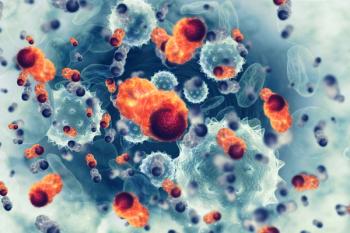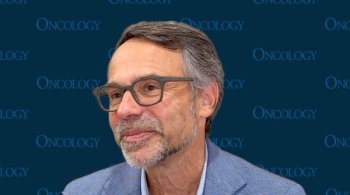
- ONCOLOGY Vol 13 No 3
- Volume 13
- Issue 3
Campath-1H Monoclonal Antibody in Therapy for Advanced Low-Grade Non-Hodgkin’s Lymphomas: A Phase II Study
Campath-1H is a humanized anti-CD52 monoclonal antibody (MoAb) that binds to nearly all B-cell and T-cell lymphomas. We report here the results of a multicenter phase II trial of Campath-1H in patients with low-grade NHL. Fifty patients with advanced, heavily pretreated, low-grade NHL were treated with Campath-1H (30 mg administered as a 2-hour intravenous (IV) infusion 3 times weekly for up to 12 weeks).
Campath-1H is a humanized anti-CD52 monoclonal antibody (MoAb) that binds to nearly all B-cell and T-cell lymphomas. We report here the results of a multicenter phase II trial of Campath-1H in patients with low-grade NHL. Fifty patients with advanced, heavily pretreated, low-grade NHL were treated with Campath-1H (30 mg administered as a 2-hour intravenous (IV) infusion 3 times weekly for up to 12 weeks).
Clinical responses were observed in 20% of the patients (2 complete responses [CR), 8 partial responses [PRs]). Lymphoma cells were rapidly eliminated from blood in 16/17 patients (94%). Complete response in bone marrow was obtained in 32% of patients, whereas lymph nodes were normalized in only 5%. Patients with mycosis fungoides appeared to respond often (4/8, including 2 CRs). Lymphopenia occurred in all patients and opportunistic infections were diagnosed in 7. Nine patients had septicemia.
CONCLUSION: Campath-1H had a significant but limited activity in patients with advanced, heavily pretreated NHL. The most pronounced effects were noted in the blood and bone marrow and in patients with mycosis fungoides. The risk for serious infectious complications needs to be considered in severely ill patients. Treatment should be monitored closely, and prophylaxis with cotrimoxazole, acyclovir (Zovirax), and fluconazole (Diflucan) should be given.
Articles in this issue
almost 27 years ago
WHO Declares Lymphatic Mapping to Be the Standard of Care for Melanomaalmost 27 years ago
Navelbine Increased Elderly Lung Cancer Patients’ Survivalalmost 27 years ago
Consensus Statement on Prevention and Early Diagnosis of Lung CancerNewsletter
Stay up to date on recent advances in the multidisciplinary approach to cancer.
















































































